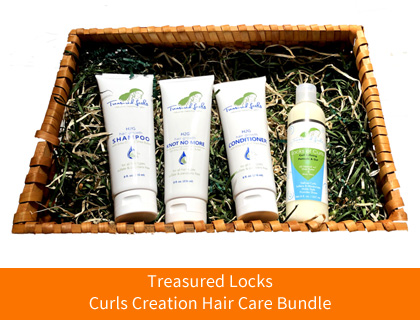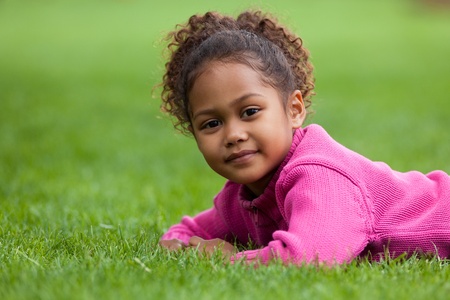
Are you having trouble taking care of your biracial hair?
Perhaps you are a mother who is frustrated by trying to take care of your little girl's biracial hair?
If so, this guide is for you.
I wrote this guide based on my extensive experience with African-American and biracial hair care. The guide will give you techniques for making your hair or your child's hair look as amazing as nature intended it to be.
After reading the guide you will have more confidence in your ability to care for biracial hair.
Treasured Locks has been in the black hair care business since 2002. These tips you are about to read address some of the questions we get most frequently from clients. They have been selected based on thousands of questions over the years.
The tips will give you enough information to develop your own unique hair care regimen. We'll start off with a short introduction and then we'll go into a series of questions and answers.
If you want to immediately reach a particular section, click on the links below to be whisked right to that section.
- Introduction to biracial hair care
- What should I expect from biracial hair?
- What tools will I need to take care of biracial hair?
- How do I comb kinky or coily or curly hair?
- How often should I wash biracial hair? How do I wash biracial hair? How about drying biracial hair?
- How do I condition biracial hair?
- How do I go about deep conditioning biracial hair?
- How should I moisturize my biracial hair? How often should I moisturize it?
- What about oil? Some people say I should use it. Some say I shouldn't. What do I do?
- What are some biracial hairstyles?
- I love my natural ringlets. How do I keep my biracial hair looking wet?
- How do I control this frizzy, curly hair?
- Should I straighten my biracial hair with a perm or relaxer?
- Ponytail tips
- What do I do with my hair while I sleep?
- I've heard I should trim my ends. Should I? Why?
- What about hair growth supplements?
- Summary
We often receive emails from mothers who have adopted African-American or biracial children. We also hear from white mothers who have biracial children and are having their first experience with kinky/curly/frizzy hair.
Biracial hair can vary tremendously
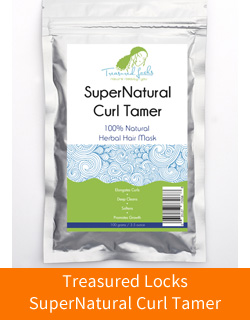 We know that for many of you this is a pretty confusing time and you want to know exactly what to do. I'd like to be able to write a cookbook style guide that would tell you exactly what products to apply on which days. Unfortunately, that's not possible.Every person's hair is slightly different and will have different needs.
We know that for many of you this is a pretty confusing time and you want to know exactly what to do. I'd like to be able to write a cookbook style guide that would tell you exactly what products to apply on which days. Unfortunately, that's not possible.Every person's hair is slightly different and will have different needs.
Genetics plays a major role. But, other factors like environment and your personal activity will make a difference in how often your hair needs to be moisturized or washed. Proper hair maintenance is more of an art than it is a science. It's something you're going to have to familiarize yourself with and adjust as you go along.
While I can't tell you exactly what to do, I can give you some very good guidelines that will help you begin to work out your own routine. I've been working on my older daughter's hair for 14 years now and on my own much longer than that. I am continually adjusting what I do.
As you are working through this, keep in mind that every single person has hair that is just a little bit different. Because of those differences, it should be treated differently. I have two daughters born three years apart to the same father and mother. But, they have different hair types and I don't treat their hair exactly the same.
While my own children are not biracial, I do have nine biracial nieces and nephews and have consulted with many biracial clients. Figuring out how to deal with biracial hair can actually be more difficult than learning to maintain African hair.
Most African-Americans are multi-ethnic even though we refer to ourselves as Black. However, most of us have hair that is more similar than a person who we choose to call biracial. Occasionally, we'll get an email or a phone call from a Caucasian mother disappointed that her daughter's hair turned out more like the father's than like hers. And, we've gotten a few calls from men asking us to explain to their wives how their daughters' hair is different from hers.
When two people with very dissimilar hair have a child, there is no way to determine how that child's hair will turn out. Again, brothers and sisters in the same family might have completely different hair types.
Expectations for biracial hair
We think more important than any "to do" tip we can give you, is conveying to you how important it is to have reasonable expectations about your biracial hair or your daughter's biracial hair.
Over the years we've been consulting with people on their hair. And just in our day-to-day lives, we've come to realize that almost no one is happy with their hair. People with thin hair want thick hair. People with thick hair want thin hair. People with curly hair want it straight and vice versa. Many Black people want "good hair". And on and on it goes.
By far the biggest complaint we get about Black hair is that it appears to be dry or that it lacks shine. We hear the same thing about biracial hair. Right after that is people being unhappy with the "frizziness" of their hair. We believe this is based on the societal standard that we've been taught that healthy hair is shiny and smooth. That isn't necessarily so. For decades, we African-Americans have been putting pomades and "grease" on our hair to give it a sheen it simply doesn't normally have. There's really nothing wrong with that, to a point. We'd like to suggest before you do too much to try to make your hair shine, you have the right perspective on just how shiny it should be.
How shiny should natural black hair be?
Natural Black or African hair will not be as shiny as relaxed hair or Caucasian hair. That is due to the physics of how light is reflected off of the hair and absorbed by the hair. A major part of what makes hair shiny is the structure of the hair. How much light your hair will reflect is not determined simply by the amount of oil or moisture it contains. The outer structure of the hair is called the cuticles, which are like scales on a fish. If the cuticles lay flat (smooth hair), the hair will reflect light (therefore it will appear shiny). If the cuticles are raised, the hair will absorb light (therefore it will appear duller).
African-American hair, because of the structure of the cuticles and the twist of the hair shaft will tend to have raised cuticles and will not reflect light as well. This doesn't apply to permed or relaxed hair, which will appear shinier because relaxing the hair smooths the cuticles. If you slather on the grease to try to make your natural African-American (or biracial) hair shine, you could end up harming the health of your hair and scalp.
My hair is too frizzy
As I said, the number two complaint about biracial hair is that it is too frizzy.
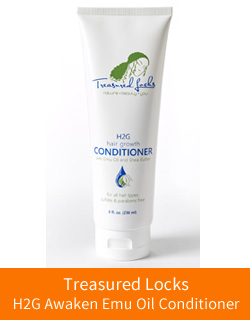 Sometimes people will describe it as too curly. There are a few things you can do to control the frizz and/or curls in biracial hair. But, most of these are temporary, unless you want to get into relaxers. Before we help someone with this issue, particularly, if they're trying to get rid of their natural curls, we always advise to first try to embrace your hair in its natural state. There are people who would kill for those curls. We ask mothers to not expect their daughter's hair to be just like theirs. And, most importantly, don't express that disappointment in front of them. We have always found it important to get our daughters to accept their bodies, including their hair, the way they were made.
Sometimes people will describe it as too curly. There are a few things you can do to control the frizz and/or curls in biracial hair. But, most of these are temporary, unless you want to get into relaxers. Before we help someone with this issue, particularly, if they're trying to get rid of their natural curls, we always advise to first try to embrace your hair in its natural state. There are people who would kill for those curls. We ask mothers to not expect their daughter's hair to be just like theirs. And, most importantly, don't express that disappointment in front of them. We have always found it important to get our daughters to accept their bodies, including their hair, the way they were made.
When handling your daughter's hair (or your own), you should think of it as if it's made of fine material, like silk. You should treat it as gently as you would wash a nice silk blouse. Keep in mind that the better it's treated, the easier it will be for it to grow out and to be manageable.
If your daughter is African-American or biracial and you are Caucasian, know that her hair will require more time and effort to maintain. You should be aware that African hair and biracial hair is usually drier than Caucasian hair. The structure of Black hair makes it more difficult for the natural sebum (oil produced by the scalp) to travel from the scalp along the length of the hair shaft. Because textured hair is kinky it will get more tangles.
Pulling through those tangles vigorously will break the hair. By looking at it, you might think that Black hair would be more sturdy than Caucasian hair. But, the opposite can be true. If it lacks moisture, it will lack elasticity so that the kinks that are snagged while styling or combing can actually snap the hair. I was once asked whether I thought natural hair was meant to be combed. After thinking about it, I said, "Probably not." I don’t think our hair's structure is conducive to having a comb pulled through it. Fortunately, there are combs that make this task less taxing on the hair.
Recommended tools
- A wide tooth comb or pick or brush made for African American hair. We like “detangling” combs like the Nubone comb and the Knot Genie.
- A high quality moisturizing shampoo and conditioner like Treasured Locks H2G Awaken Emu Oil Shampoo and Conditioner.
- A deep conditioning or moisturizing treatment at least once a month. We recommend our SuperNatural Curl Tamer with the HydraCap
- A sleep cap or pillow case other than cotton- we like satin
How to comb kinky hair
For people who have not worked with kinky hair, this will be a very important section.
- Never comb out kinky hair while it is dry. I always use a moisturizer before combing out to help keep the elasticity in the hair and to reduce the friction between the comb and the hair
- I suggest looking for a "detangling" comb to use. Definitely be sure to have a wide tooth comb. The kinkier and thicker your hair, the wider you'll want the space between the teeth to be. As stated above, I like the NuBone combs and the Knot Genie.
- Try to be patient and gentle. It's never a good idea to try to comb kinky hair when you're in a rush. It'll be frustrating for you and for your daughter.
- Work in sections. I start by parting the hair and tying off the part I'm not currently combing. Then I gently grasp the hair near the scalp with my free hand.
- Hold the hair near the scalp. When I pull, by holding the hair near the base, I'm not pulling on the scalp. But, the comb is pulling the hair against my hand. This keeps from damaging the follicles and hurting my daughter.
- Comb gently starting at the ends, removing tangles there and moving down along the hair shaft until tangle-free.
- Then, tie off that section and move to the next.
How to wash biracial hair
One of the most difficult and important decisions you'll have to make will be how often to wash biracial hair. A good rule of thumb is to start out with once a week and adjust up or down from there. In the winter this might stretch out a little longer. In the summer, when kids are playing or swimming, you'll need to wash more often.
One of the most common errors made by white parents of Biracial or African children make is washing the hair too often. Some parents of biracial children we have heard washing their child's hair daily. Rarely will a biracial child need to have her hair washed every day. Many of my Caucasian friends wash their own hair every day because the natural oils weigh down their fine hair and they have to be removed. This is almost never the case with biracial hair.
Over-washing can lead to dullness and dryness, especially when done with the wrong shampoo which almost always seems to be the case when people are washing this often. For biracial hair care, you may want to consider washing a little more often than once a week. But, you will rarely want to wash more than a couple of times a week.
Between Washings- If your child swims often or sweats from her scalp, you may be tempted to wash too often. What we do to prevent this is to rinse with warm water and condition several times a week and continue to use shampoo on our weekly rotation.
Drying biracial hair
When washing, wash the hair gently while thoroughly massaging the scalp. When you dry, use a towel and blot the hair instead of rubbing it vigorously. You should blot the hair dry and then allow to air dry as much as possible before using heat. You might need to use heat to dry it quickly. Use as little as possible.
Tips for conditioning biracial hair
Conditioning the hair is almost as important as washing it. Conditioning the hair softens it, restores elasticity and gets those cuticles to lay more flat (making it shinier).
Deep conditioning:
- To add moisture and increase elasticity, you should deep condition the hair at least once a month. Do this after the normal shampooing.
- After washing, apply a deep conditioning product. The HydraCap is great for deep conditioning.
- Leave the cap in place for at least 30 minutes. The gentle moist heat from the cap will allow the cuticles of the hair to open so that the conditioner can penetrate the hair shaft.
- You might also opt to do a hot oils treatment instead.
Tips for moisturizing biracial hair
This is the most often overlooked aspect of caring for biracial hair. Knot No More is excellent for providing moisture while at the same time making comb outs easier.
The key to healthy biracial or African-American hair is keeping the right amount of moisture available to the hair. There is some dispute as to whether oil is necessary or advisable to put on hair. But, there is no doubt that moisture is important. Dry hair will not have elasticity and therefore will break more easily than hair that is hydrated.
Here are some tips for keeping your hair hydrated and moist:
- Keep the body well hydrated by drinking plenty of water. This is good for your overall health, including your hair.
- Moisturize with good products and be generous with how often you moisturize. Just as you put lotion on your skin when it's dry, it's important to put a moisturizer on your hair.
- Moisturizing is not necessarily the same as oiling. Some oils are natural emollients (softeners) and humectants (water-attracting). They will help the hair draw in moisture from the surrounding air.
- Oiling is definitely not the same as putting on "grease" (see below). Just the word "grease" makes me cringe as I think of the thick, greasy, anything-but-natural stuff that is still sold in drug stores and beauty supply stores.
- After deep conditioning or conditioning, I moisturize. I recommend moisturizing at least twice a week. Every time I style, I moisturize. And, often in between stylings, I'll moisturize. I believe this is the key reason why my daughters' and my hair is so healthy.
Should I put oil on biracial hair?
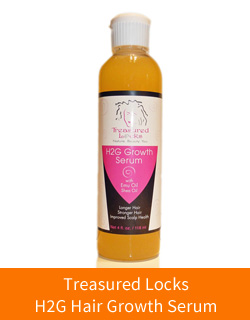 This has become somewhat controversial over the last several years with "experts" taking up both sides of the debate. You will have to decide for your self whether you think it is best to oil or not. I can tell you that my personal experience is that most biracial or African-American people can benefit from some amount of additional, natural oil put on their hair occasionally.
This has become somewhat controversial over the last several years with "experts" taking up both sides of the debate. You will have to decide for your self whether you think it is best to oil or not. I can tell you that my personal experience is that most biracial or African-American people can benefit from some amount of additional, natural oil put on their hair occasionally.
I think maybe some of the reason for the debate is too much oil and/or the wrong type of oil can do more harm than good. In our Treasured Locks products, we use only all natural oils, mostly plant oils. We do not use mineral oil or any petroleum-based products.
The exception to the rule about plant oils is emu oil, which is the major component in our H2G Hair Growth Serum. Emu oil is obtained from a large bird. It is phenomenal when it comes to promoting hair and skin health. It softens and lubricates and it has essential fatty acids that are great for the scalp. It is an anti-inflammatory that soothes the scalp, improving circulation and promoting hair growth.
How to oil your hair is one of those things you'll have to experiment with. My biracial nieces have different needs. They are sisters. But, one has very fine, smooth hair and needs no additional oil at all. The other can use a light oil which really helps control the frizziness.
To apply oil, I put a small amount in the palm of my hand. If I'm using something like Shea Butter or our Herbal Hair Balm (both solids), and melt it. I then rub it on the hair and gently massage the oil into the scalp. I will not use anything that doesn’t melt at body temperature. I'm not a huge fan of beeswax because it melts at something way above body temperature. If I happen to use something with a little beeswax (which has a relatively high melting point), I make sure the combination still melts at body temperature so that it doesn’t build up. I often mix a couple of the products. I actually prefer products that are liquid at room temperature.
Some of my favorite oils for hair are:
- Shea butter oil- Shea butter in liquid form has become available over the last few years. It great because it retains many of the great attributes of shea butter in an easier to use form. When we started Treasured Locks, it was based exclusively on shea butter products. That was before shea exploded in popularity. We still love shea butter and it remains one of the key ingredients in many of our products.
- Emu oil- Emu oil is amazingly beneficial for the health of the scalp. Emu oil promotes better circulation. It controls inflammation. And, it has natural antiseptic properties. All of these things combine to make hair grow faster and stronger.
- Jojoba oil- Jojoba oil is the closest thing to the natural secretions of the scalp (sebum). Technically, it's not an oil but a wax. But, it's referred to as an oil because it's liquid at room temperature. Jojoba can actually make oily skin less oily and dry skin more oily. When it comes to biracial hair, we are usually using jojoba to bring more oil to the scalp.
- Argan oil- Argan oil has many of the same properties as emu oil, in terms of being anti-inflammatory, a great moisturizer, antiseptic, etc. It is obtained from the nut of a tree that is usually grown in Morocco. It's experiencing the same rocketing popularity shea butter has experienced.
- Castor Oil- Castor oil is an all natural plant oil that naturally draws moisture out of the air and into the hair and scalp.
Over the course of the last few years, all of my favorites oils (except castor oil) have greatly increased in price. As a result, you'll find many manufacturers have cut way back on how much they put into their products. At Treasured Locks, we want to give you more of the good stuff. So, you'll find our products are still loaded with the most beneficial oils, in spite of the cost to us to make them that way.
Repetition
How often you wash, condition, moisturize, deep condition and oil is of a great importance. The above will give you some guidelines to start with, and then adjust to more often or less often, as needed. Too often and you might experience build-up. Or if you wash too often with a drying shampoo, you'll actually dry the hair out. Not often enough and you'll experience dry and/or brittle hair.
Styling tips for biracial hair
For the most part, I style without the use of styling products like mousses, gels, etc. Since my daughters are young, I have them in ponytails, plaits or braids most of the time.
I am intentional about not having them wear their hair in the exact same style too often. Styles that pull the hair, in the same way, day after day (for example always pulling the hair up in a tight ponytail), can damage the follicles and lead to a certain type of hair loss called traction alopecia. Over time, this can even lead to permanentl damage.
If you decide to use styling products, be cautious about using products with ethyl or methyl alcohol which are drying to hair and scalp. Also, avoid products that lead to build up. Watch for the hair starting to look dull or for flakes.
How to maintain natural ringlets in biracial hair. How to keep biracial hair looking wet.
We have had several customers contact us saying that they love the look they have when their hair is wet and they want to know how to keep those ringlets when the hair has dried. One of our clients shared the technique she and her sister use. Note: This will not work on all hair types. You have to begin with soft, natural springy curls which will be a function of your natural hair texture.
For those with softer, natural curls who want more definition, this is a great technique. This hair style is well suited to bi-racial hair types.
- Wash the hair once a week. On the other days you can rinse and skip washing.
- Every day detangle the hair
- On a daily basis, apply a leave-in conditioner. Treasured Locks Shea Butter Nourishing Leave In Conditioner is wonderful for this step.
- Wet hair thoroughly with a liquid spray moisturizer. We like Black Earth Protective Mist Bodifier.
- Apply Treasured Locks Locks of Curls Curl Defining Pomade & Gel or another styling gel.
- Follow up with a just a slight amount of hair oil- Treasured Locks African Argan Oil Elixir would be useful.
- If possible, allow to air dry. Pulling it back in a loose pony tail will help stretch out the curls.
- If you don't have time to allow the hair to air dry, use a blow dryer on the lowest temperature setting. Stretch the hair gently as you are drying it.
Controlling frizz & curliness
I know I stated this pretty strongly before, but, I feel it bears repeating. Expectations are important when it comes to hair. When people ask us about eliminating frizziness, they are often actually talking about natural curls.
Most of the time, biracial children's hair will have more texture- curliness and frizziness than Caucasian or Asian hair. To completely get rid of all frizziness or curliness will be difficult, at best. It also may send the message to your child (if you're trying to do this for your daughter) that her natural hair is not desirable. However, Treasured Locks does carry products that will help to control frizziness and curliness.
SuperNatural Curl Tamer works beautifully on biracial hair. It's applies once a month or so. It's all natural, has a temporary effect and naturally loosens the curl pattern and tamps down frizziness. It can be applied in the home and wears off after several weeks.
For those looking for a more permanent solution, a mild relaxer, texturizer or kiddie perm si worth consideration. However, we recommend that you read our precautions below though before making this major decision. If you’re not familiar with them, please become familiar with all the considerations before making that decision.
Perms and relaxers
We frequently get calls from frustrated mothers asking about perms for young girls. Unfortunately, often the questions come after the child has had a perm and the family is realizing the relaxer hasn't solved the problems they were having before.
Some people think that if they use a relaxer, which can make biracial hair looks more like Caucasian hair, that it will also be easier to maintain. Unfortunately, that is rarely the case. In fact, many parents after a perm will turn over the care for the hair over to a daughter who is not ready to handle it yet and more problems are experienced. Then, we get the call asking how to reverse the perm.
If you decide to use a relaxer on your, or your daughter's hair, please know that the results are long lasting. There is noway to return hair to its natural state. Restoring the hair takes month as it is a process of transitioning and waiting for completely new growth. Hair typically grows an average of one-half inch a month. Thus it can take up to a year to replace six inches of hair that has been permed.
We recommend against relaxers for girls who have not yet gone through puberty. Before puberty, their hair and skin are still developing. Also, we worry that this may send a message to your child that their natural hair isn't good enough.
SuperNatural Curl Tamer has been a God-send for many mothers who were considering relaxers. It allows the child to keep their natural hair while making it more manageable. I use SuperNatural Curl Tamer on our older daughter as well as my own hair. It has made her hair much more manageable and improved the texture. Since beginning the use of SuperNatural Curl Tamer, I can comb her hair in about half the time it used to take.
Our daughters have their hair pressed and/of flat ironed once in a while so they can wear it "down" for a change. We also let them get braids every once in a while. By using these strategies, we have been able to avoid relaxing their hair throughout their pre-adolescent years.
If you're still thinking about relaxing, please consider the following before you start.
- I strongly urge you not to use home box relaxer kits. We are often asked to give a recommendation of a specific relaxer. Since we do not apply relaxers, we do not have any recommendations. We do not sell relaxers kits because we think relaxers should be applied by professionals only.
A beautician has told us that home box relaxers are not of the same quality of salon relaxers. I don’t know if that’s true. But, even if it is not true, I believe a chemical relaxer or perm is a process that is best performed by a professional. The chemicals in a relaxer can cause serious damage to the hair, damage that cannot be repaired but has to be grown out. A relaxer, improperly applied can do permanent injury to the scalp. This isn't typical. But, it's definitely possible.
One compromise we might be willing to make if money is really an issue is to go to a local beauty school. At least then the perm will be applied under professional supervision, even though it's a student doing the work. The cost at beauty schools will usually be a fraction of the cost in a salon. - If you are are going to apply a relaxer at home, read the instructions through at least twice before starting. Make sure you have everything you need in front of you before you start. Apply the relaxer exactly as instructed. Only apply the chemical to the new growth. Putting relaxer on the the same part of a strand of hair over and over again thins it a little more every time. It will break off. This is not a matter of "if" it will break. It's a matter of "when."
- Once you begin to put relaxers in your hair, you have to keep on doing it. It's not a matter of putting a relaxer in, deciding you don't like it then never putting another in.
Hair grows from the scalp with the new growth being nearest your scalp. Once the natural hair reaches a certain length underneath the relaxer hair, the hair is in what we call a transition states. At this point, the hair is vulnerable to breakage and the appearance will be unsightly with the roots being puffy and kinky looking in comparison to the relaxed hair. If the hair is not maintained very carefully during this time, the hair can being to break excessively.
Usually a relaxer will be required every 6-8 weeks depending on the hair texture and the rate of growth. Transitioning, without taking the right care of your hair can be traumatic because of the appearance of the hair during that time and the breakage. And, eventually, the relaxer hair will have to be cut off, if you decide to go back to natural hair. - Once the hair is relaxed, it is slightly weaker. Also perms reduce the ability of the scalp to oil itself. Permed hair is delicate and actually requires more diligent care than natural hair.
Ponytail do’s and don’ts
Bound hairstyles are fantastic hairstyles for little girls. Bound hairstyles keep the hair tame and keep it from tangling. With braids, plaits or twists I can get several days to a week out of a hairstyle. However, bound hairstyles can lead to serious hair problems including hair breakage or (in rare cases) permanent hair loss.
Here are some dos and don’ts you will want to be aware of:
- Don’t use common rubber bands from office supply stores to hold hairstyles. Don't use the bands with the metal clips on them either. Normal rubber bands cause too much friction on the hair that can lead to the hair breaking. Go to a beauty supply store and get covered bands or smooth bands designed specifically for use on hair.
- Do remove all bands from the hair every night before bed time. Plait the hair for sleeping.
- Don’t- pull the hair back too tightly. It might look great. But, if your daughter's hairstyle is pulling her forehead up, it's causing too much stress on her hair follicles. If you use a lot of pulled back hairstyles, be aware of bumps around the hairline especially. If you see small bumps in that area, look for hair loss. This is an early sign of traction alopecia.
Sleeping
Before sleeping, take down tight hair styles. Remove tight bands. Use a satin pillowcase or a satin or nylon sleep cap to help keep moisture in the hair and reduce hair loss from friction with the pillow.
Trimming the ends
Because hair grows from the scalp, not the end, the ends of the hair are the oldest part of the hair. Hair can get worn out before the end of its life cycle. If the ends are neglected or abused, they can split. That's bad enough. But, those splits can travel down the hair shaft causing damage to the otherwise health hair.
It might go against your intuition, but trimming the ends regularly can actually lead to having longer hair. Take special notice of the ends of the hair. If you see they are dry, you'll want to adjust your routine (wash less often, condition more often, moisturize more often). If you notice the hair tangling at the ends or looking frizzy at the ends, have them trimmed. This is not something I did early on with my girls. But, once I started, I noticed an immediate improvement in the manageability of their hair. It was immediately easier to comb.
Hair growth and hair health supplements
I use both the Treasured Locks H2G Hair Growth Supplement and Treasured Locks H2G Hair Strength Supplement.
Since starting these supplements I have noticed considerable improvement in the appearance of my hair and nails. Most customers that start on them report an improvement in their nails and skin within a couple of weeks and their hair in a month or so.
To have healthy hair, it's vital to have proper nutrition and hydration (drink water). Supplements that are especially designed to support healthy hair are beneficial. Note: our supplements are formulated for adults and not recommended for children under the age of 13.
I do recommend the use of our Treasured Locks H2G Hair Growth Serum. It is safe for all ages. I use it for both myself and the girls. It contains a proprietary blend of essential oils and emu oil help that work together to speed hair growth by stimulating circulation and by keeping the hair well oiled, moisturized and soft.
Summary
Wow! Did you actually read all of this? ;-) I hope you have found this information useful. We'd like to give you a more specific recipe for your hair routine. But, if you follow these general guidelines you can easily begin to improve the health of your hair.
Start to be observant about your hair and learn how it responds. In a matter of days, weeks and months the proper products and techniques will bring about improvements that many people find amazing.
If you still have any questions , please do not hesitate to contact us. We’re glad to help.
Peace
Tywana
Save Time - Order Our Curls Creation Hair Care Bundle Now
Our Curls Creation Hair Care Bundle includes four of our top-rated products, Treasured Locks H2G Shampoo, Treasured Locks H2G Conditioner, Treasured Locks H2G Knot No More, Treasured Locks Locks Of Curls Pomade & Gel; everything you need for gorgeous, soft, natural curls.
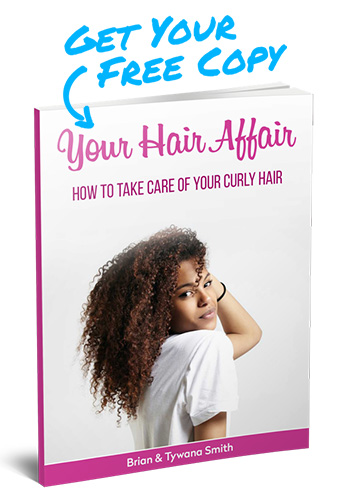
Photo credit: sam74100 / 123RF Stock Photo






